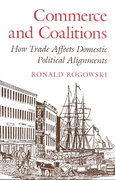macro questions
Which of the following best defines real exchange rate? Select one: O 0000 a. the price of domestic goods in terms of foreign goods b. the price of foreign bonds in terms of domestic bonds c. The price of domestic currency in terms of foreign bonds d. the price of domestic currency in terms of foreign currency e. the price of foreign currency in terms of domestic currency In a country like Saudi Arabia, which earns substanceal income from holding the stocks and bonds of other countries, we would expect Select one: O a. GNP to be larger than GDP O b. a current account surplus larger than GNP O c. GNP to be smaller than GDP O d. a current account surplus larger than GDP O e. a current account deficitWhen a country has a current account surplus, we know that it is also Select one: Q a. running a balanced trade account b. lending to the rest of the world c. borrowing from the rest of the world d. suffering from negative investment income 0000 e. none of the above Please state whether the following sentence is true or false: The interest parity condition means that two countries that share a common currency (and hence have fixed exchange rates between them) must have equal interest rates. Select one: 0 True 0 False For this question, assume the following; 1. The interest rate in the Euro area is 4%; 2. The interest rate injapan is 2%; 3. The current nominal exchange rate is 165 (1 = 165 Yen); 4. The expected nominal exchange rate next year is 155. Using the information above answer the following question: Using the approximation formula, is the data are consistent with uncovered interest parity? Select one: Q a. Yes, the approximation formula gives a result of aproximately 2% difference which is consistent with the difference between interest rates (4%-2%) O b. No, the approximation formula gives a result of of a larger than 2% difference which is not consistent with the difference between interest rates (4%-2%) O c. It is not possible to answer this question with the data available. For this question, assume the following; 1. The interest rate in the Euro area is 4%; 2. The interest rate inJapan is 2%; 3. The current nominal exchange rate is 165 (1 = 165 Yen); 4. The expected nominal exchange rate next year is 155. Using the information above answer the following question: Ignoring risk and transaction costs, should a French resident prefer to invest in Euro-area orJapanese bonds? Select one: Q a. The French resident would be better investing injapanese Bonds 0 b. The French resident would be better investing in Euro Bonds 0 c. The French resident does not have enough information to make a decision 0 d. The French resident would be indifferent betweenjapanese and Euro Bonds Assume the following; 1.The interest rate in the Euro area is 4%; 2. The interest rate in Japan is 2%; 3. The current nominal exchange rate is 165 ('l = 165 Yen); 4. Expected nominal exchange rate next year is 155. Using the information above answer the following question: How many Euro would a French resident expect to earn for each Euro invested in Japanese bonds for one year? (use 4 decimal places)













